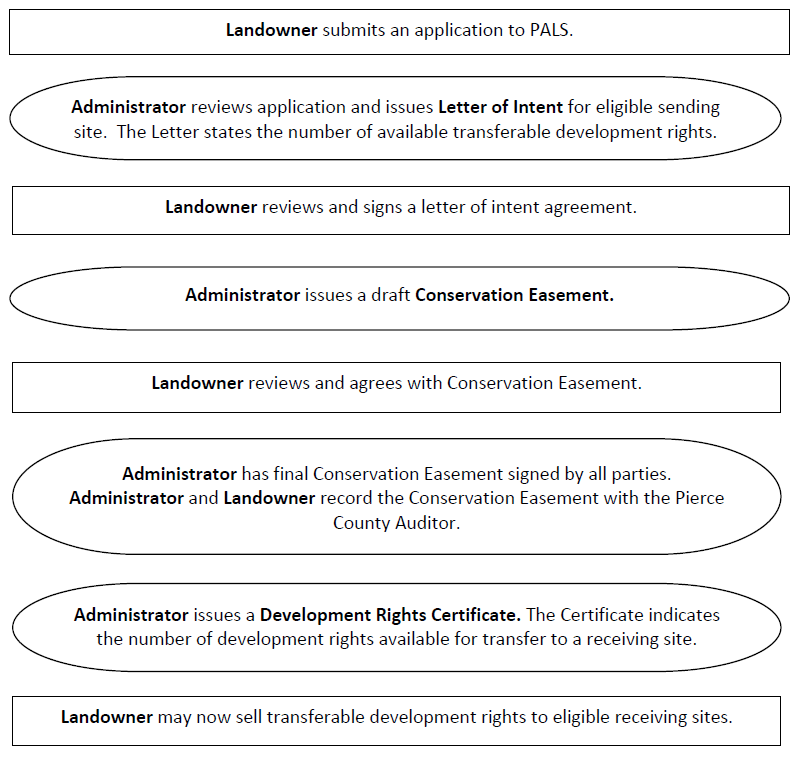18G.10.050 Sending Site Eligibility Criteria.
A. Sending sites shall contain a public benefit, and the preservation of that benefit, by transferring development rights to another site, is in the public interest. A sending site may be presumed to contain a public benefit if it meets at least one of the following criteria:
1. The site has a land use designation of Agricultural Resource Land (ARL), Rural Sensitive Resource (RSR), or Forest Lands (FL).
2. The site is located in the rural area and is zoned as rural residential (Rural Separator, Rural 10, Reserve 5, Rural 20, Rural 40, Rural Farm, or Rural Sensitive Resource); defined as Open Space Land pursuant to RCW 84.34.020; and used for agricultural operations.
3. The site is identified in the Pierce County Comprehensive Plan, including community plans, or the Pierce County Park, Recreation and Open Space (PROS) Plan, as a regional trail or associated public purpose.
4. The site contains habitat for a federally listed endangered or threatened species. Such determination shall be in writing from the Washington State Department of Fish and Wildlife, United States Fish and Wildlife Services, or from a federally recognized tribe.
5. The site is designated as Recreational Conservation Lands which are located in an urban growth area, or are designated as urban or rural shoreline, and meet all of the following:
a. The site is threatened with probable development within the next ten years;
b. The site comprises a significant part of the inventory of available open space in an area or community; and
c. The site provides the public with passive recreational opportunities or active recreational opportunities such as golf, baseball, softball, soccer or other sports or activities not requiring intensive development of the land.
6. The site is identified as eligible sending sites by an interlocal agreement with the County.
B. If a sending site consists of more than one lot, the lots shall be contiguous. For purposes of the Program, lots divided by a street are considered contiguous if the lots would share a common lot line if the street was removed, although this provision may be waived.
C. The owner of a potential sending site shall resolve any outstanding Code violations, including any required abatement, restoration, or payment of civil penalties. In limited instances, outstanding Code violations may be allowed if the TDR Administrator or TDR Technical Oversight Committee determines that the owner has made a good faith effort to resolve the violations and the proposal is in the public interest.
D. For sites on which the entire site or a portion of the site has been logged in accordance with a Class II, III, or IV Forest Practice, as defined in Chapter 76.09 RCW, within six years prior to application as a sending site, the applicant shall provide an affidavit of compliance with the reforestation requirements of Chapter 76.09 RCW.
FIGURE 18G.10.050-1 – Sending Site Process
